
Chrysotoxum cautum is a species of hoverfly. It is found in southern Britain and Europe East into the Palearctic but is normally encountered in small numbers. The larvae are thought to feed on root aphids. Adults are usually found on the edges of woodland or scrub or along hedgerows where they visit a wide range of flowers.
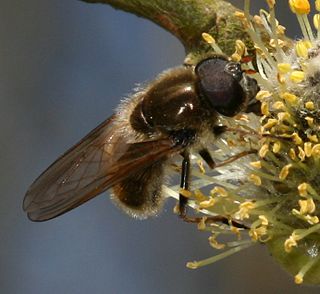
Cheilosia albipila is a European and Palearctic species of hoverfly. Like most Cheilosia it is black, and because of this may often be overlooked as a hoverfly. It is little recorded but probably widespread and common and maybe overlooked because adult flight periods are early in the year, before many hoverfly recorders are active.

Leucozona lucorum is a Palearctic and Nearctic species of hoverfly.
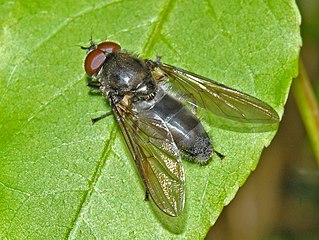
Cheilosia variabilis, common name figwort cheilosia, is a species of hoverfly belonging to the family Syrphidae.
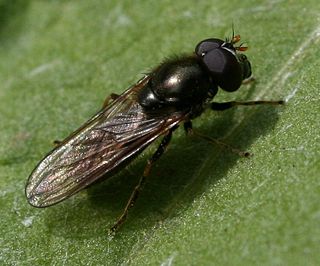
Cheilosia pagana is a Holarctic species of hoverfly. Like most Cheilosia it is black, and because of this may often be overlooked as a hoverfly. One identifying feature is a large red to orange 3rd antennal segment.
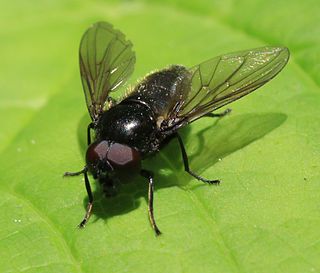
Cheilosia vicina is a hoverfly species found in the Palearctic.

Cheilosia grossa is a widespread European species of hoverfly. Adults can be found in spring on sallow catkins and the larvae tunnel in the stems of various thistle species.

Cheilosia bergenstammi is a widespread European species of hoverfly. Adults can be found in summer visiting ragwort flowers and this plant is also the larval hostplant.
Melangyna arctica is a Holarctic species of hoverfly.

Cheilosia nebulosa is a Palearctic species of hoverfly.
Chrysotoxum fasciatum is a species of Holarctic hoverfly.

Cheilosia antiqua is a European species of hoverfly.
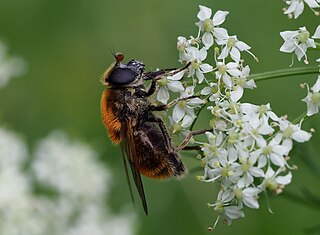
Cheilosia chrysocoma is a European species of hoverfly.

Cheilosia vernalis is a Palearctic hoverfly.
Cheilosia velutina is a Palearctic hoverfly.
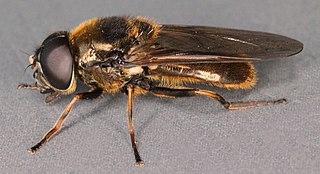
Cheilosia fraterna is a Palearctic hoverfly.
Cheilosia lasiopa is a Palearctic hoverfly. This species was previously misidentified as Cheilosia honesta.
Cheilosia nigripes is a Palearctic hoverfly.

Cheilosia praecox is a Palearctic hoverfly. Speight et al. (1998) indicate that the correct name for this species is C.urbana (Meigen)

Cheilosia vulpina is a Palearctic hoverfly.















